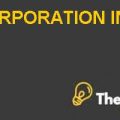QUESTION NO1
FAB'S DEFINITION OF A LEASE:
According to the new standard, it can be defined as:
"Any contract or a part of a contract that transfers the right to control the use of an identified asset, i.e. property plant or equipment for a period. The contract is established between the parties by exchange of consideration". For a contract to be identified as lease, it must contain the following characteristics:
Depends on the use of recognized asset i.e. the asset under consideration to drive all the economic benefits from the asset. (an identifiable asset explicitly or implicitly which represents the substantive distribution rights of a (lesser).
Conveys the right to use that asset over the lease term. (direct use of the asset)
- b) Exception in transition:
When transiting towards the new standard and applying the changes, the lessees and lessors are required to recognize and measure for the earliest period they are going to account for the lease transactions using a thoughtful approach. If one opts for this thoughtful approach, then they are going to cater many practical expedients that are optional in nature and it depends on the entity that how they will apply those expedients according to their company's requirement.
These expedients relate to:
Identification of lease; initial direct cost that has incurred before the commencement of effective date, the foresightedness to establish the lessee's intention about to extend or terminating the rental agreement after the retrospective application of the conditions.
These practical expedients are operational and continue to operate after the effective implementation of the new laws in accordance with the previous GAAP, but except for operating leases, these leases should be recognized as right-of-use asset and lease liability for all those types of leases at the reporting date based on the present value of remaining minimum rental payments that were disclosed under previous GAPP.
There are also some specific guidelines regarding the sales and lease back transactions and build-to-suit leases, leveraged leases, and amounts previously recognized by the business combinations guidance for leases.
Question no 2
Write a memo explaining in simple terms the FASB
MEMO
TO: Newton
FROM: XYZ
SUBJECT: FAB'S Reasons for the transformational changes and the potential concerns over the matter.
FASB's proposal comprised of several factors and solution to mitigate the effect of possible issues that might encounter after adopting this new topic 842, and by providing those solutions to cater the issue, they are of the vibe that this new transformation to account off balance sheets items is not that much difficult and it would not cause violation of debts covenants. Some of the factors that are explained by FASB are:
Most of the loan agreements contain the clause of "frozen gap" or "semi-frozen gap."
This provision will help to incorporate the changes if any new GAAP accounting changes are made. By the aid of this clause, this would indicate that it would not be debt covenant if the changes are incorporated into sound financial practices.
This clause also provides room to negotiate regarding the real terms of a contract and to arrive at a possible solution without any disqualification of debt covenants..........................
This is just a sample partical work. Please place the order on the website to get your own originally done case solution.










